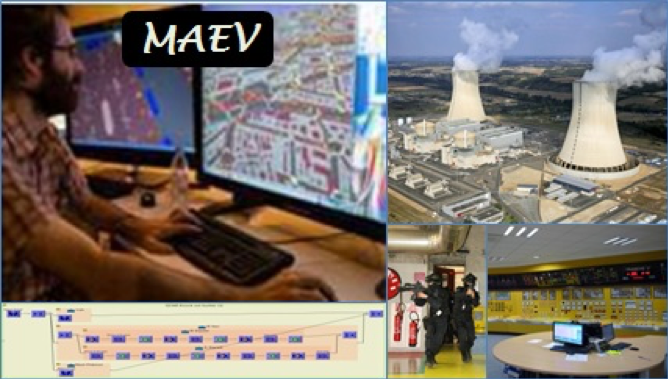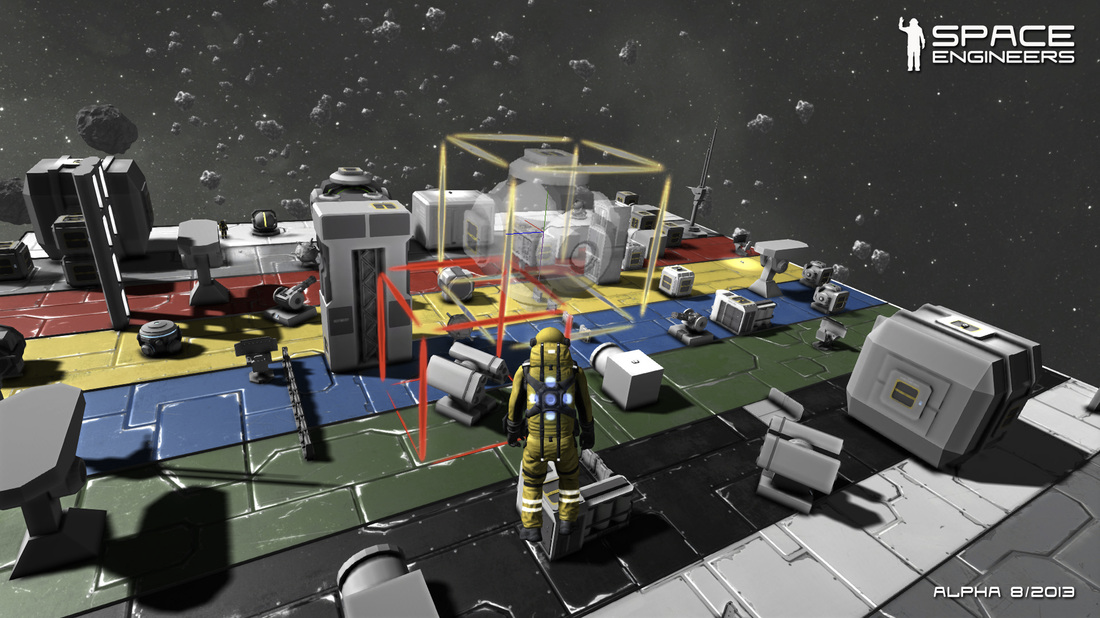iv4XR
Intelligent Verification/Validation for Extended Reality Based Systems
Use cases
In iv4XR there are three pilots provided by the industrial partners covering different aspects of XR based systems.

Nuclear plant intrusion simulation (Thales AVS France)
THALES AVS France develops very sophisticated simulation systems that involved not only virtual representations of real environments but also the simulation of virtual actors in addition to the participation of real actors (trainees and/or animators). The animation of these virtual actors is realized by specific components called CGE (Computer Generated Entities) for civil applications and CGF (Computer Generated Forces) for military applications that allow, thanks to Artificial Intelligence algorithms, the construction of very complex scenarios.
In this pilot we want to study how iv4XR can improve the current process simulation scenario verification of our CGE MAEV by: (1) automating the process, hence reducing the amount of manual work, (2) improving the quality of the verification by delivering more test coverage, and (3) extending the scope of the verification by including UX assessment which is currently lacking due to the absence of a feasible methodology for doing it.
The pilot involves the simulation of an attack by intruders trying to gain access to a nuclear plant. It is a study simulation whose objective is to assess the defense strategy of the plant. This defense strategy will be implemented in the simulation by a CGE scenario that includes the positioning of a set of fixed sensors disseminated into the infrastructure and the assignation of missions to the defense unity groups (static position, uniform rotation, patrol on a circuit, etc.).

Space Engineers (GoodAI)
Space Engineers (SE) is a complex open world game with volumetric physics developed by Keen Software House which is a sister company of GoodAI (GA). In a world with volumetric physics, objects behave like real physical objects with mass, inertia and velocity, allowing a more realistic simulation of the physics of the real world. SE is a very popular game, amassing currently millions of players. In SE players can build any object from blocks and the construction works just like if it would in the real world in a similar fashion as in LEGO Technic. SE is also highly “moddable” – which means that we are giving players the tools to alter the game and its functions in any direction, adding new blocks, changing visuals, etc.
In this pilot, GA is interested in developing intelligent test agents to test SE. The current V&V process relies on manual testing, assisted with only a simple record and replay tool. The tool is used to record human testers while playing short 1-2 minute test sessions in SE. For each, the tool records all keypresses and mouse movements and clicks by a tracked player. It also makes screenshots. When something is changed in the code of SE, the recording can be replayed as autonomous tests. The tool compares screenshots made during recording and those made during replay and uses this information to signal regression errors. During the test, the game is configured to behave “almost” deterministic, so the above approach does work. While this helps in discovering regression errors, new test cases still need to be manually created when new functionalities are added to the software in order to verify the correctness of these new functionalities. Of course, once recorded, the new tests can afterwards be replayed, but the manual part is costly and difficult to scale up.

Augmented monitoring of smart structures (Gameware)
In this pilot, we want to demonstrate the suitability of iv4XR in automating the verification and validation of an augmented monitoring system of smart structures. Such a system consists of a so-called “smart structure”, e.g. a building or a bridge, equipped with a network of IoT devices placed within and around the structure, e.g. sensors, including environmental sensors. The monitoring system provides an interactive 3D visualization model of the structure. Obviously, it is important to provide a visualization model that is technically consistent with the actual structure.
This can be done by reconstructing it from the structure’s original Building Information Modelling (BIM) models. An operator can navigate through the 3D model to inspect the status of different parts of the building. The system can provide advanced interpretation and visualization of raw data from relevant sensors. Such a system is useful for monitoring, maintaining, and managing the structure to make sure that the structure remains in a safe state and operates optimally, e.g. towards saving energy or minimizing environmental emissions. It is also useful to note that BIM is being strongly pushed for by governments around the world. Widespread adoption of BIM would further leverage the value of augmented monitoring. With BIM models widely available, it will become much less costly to construct the needed accurate 3D models. Good and accurate 3D visualization will be an immensely valuable tool for many building and site organisations.
